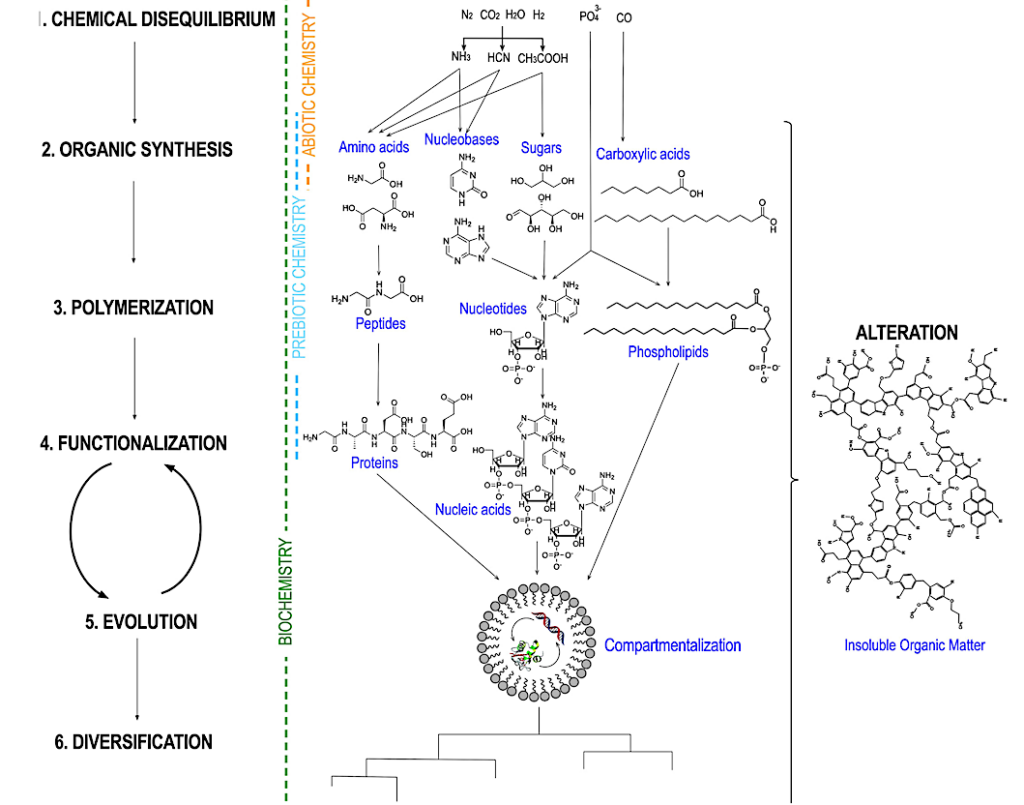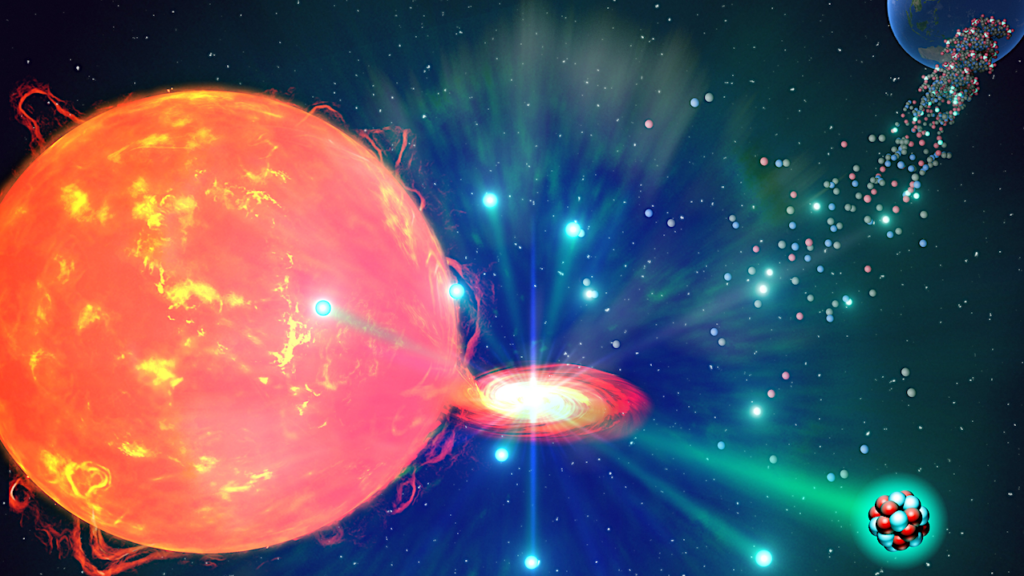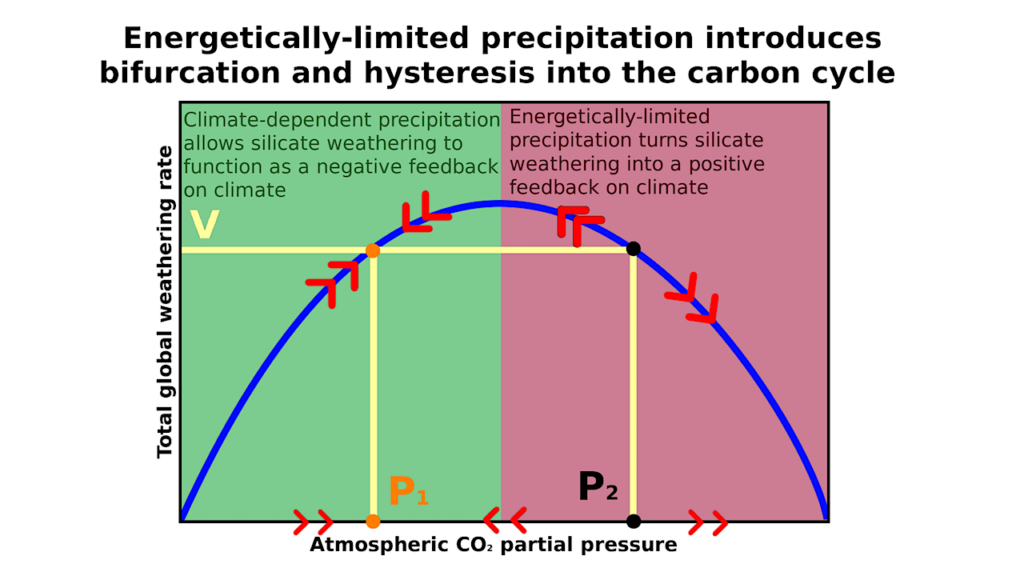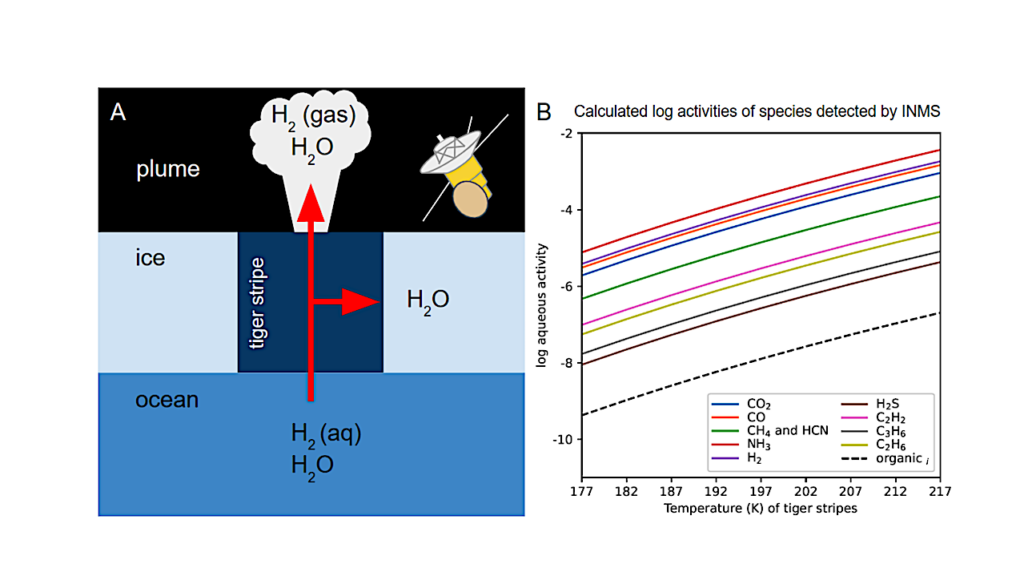Enceladus: Astrobiology Revisited

Astrobiology research seeks to understand how life begins and evolves, and to determine whether life exist elsewhere in the universe. The discovery of diverse ocean worlds has significantly expanded the number of planetary bodies in the Solar System that could potentially contain life.
Of the recognized ocean worlds, Saturn’s moon Enceladus stands out because it appears to meet all requirements to sustain life. For that reason, robotic mission concepts are being developed to determine whether Enceladus’ ocean is inhabited.
The theory of organic chemical evolution (OCE) represents an ideal framework to guide this exploration strategy, articulating investigations and associated measurements of organic matter in the subsurface ocean. Within this reference frame, the immediate priority with the lowest science risk would be to understand molecular and structural properties of bulk organic matter in the ocean, and search for metabolic precursors and biochemical building blocks, both free and bound.
This could be supplemented with “high-risk, high-reward” searches for functional polymers, catalytic activity, and cell-like objects with traits indicative of evolutionary adaptations. The theory of OCE provides a robust scientific foundation for the astrobiological exploration of ocean worlds, fostering a productive path to discovery with lower mission risk that could be implemented with existing technology. Strong synergies between astrobiology and Earth-bound research could ensue from this exploration strategy particularly in the context of terrestrial analog studies and laboratory simulations.

Schematic representation of the main steps in the theory of organic chemical evolution (OCE). In Stage 1, simple inorganic precursors exploit free energy to form small organic molecules. In Stage 2, reactions between small organic and inorganic molecules and minerals generates biochemical building blocks. In Stage 3, biochemical building blocks undergo condensation reactions and form small organic polymers. In Stage 4, organic polymers become structurally complex and display emergent autocatalytic properties such as the ability to self-replicate or to sustain cyclic networks reminiscent of metabolic cycles. In Stage 5, a self-copying organic polymer would emerge that can make (inexact) copies of itself and is susceptible to chemical alterations (mutations). Compartmentalization may be a prerequisite for the emergence of autocatalysis and evolution by natural selection (e.g., Deamer et al., 2002), leading to the first cells and the first cell lineages. In stage 6, competition for resources between genetic lineages can cause an explosion of forms and functions, and different cell lineages that slowly or rapidly diverge from each other. Applicable to every stage of OCE, organic materials, particularly more functionalized compounds, may encounter environmental instability after formation, making them susceptible to alteration — JGR Biogeosciences
Enceladus: Astrobiology Revisited, Journal of Geophysical Research: Biogeosciences (open access)
A. F. Davila, J. L. Eigenbrode
First published: 25 April 2024
https://doi.org/10.1029/2023JG007677
Astrobiology








